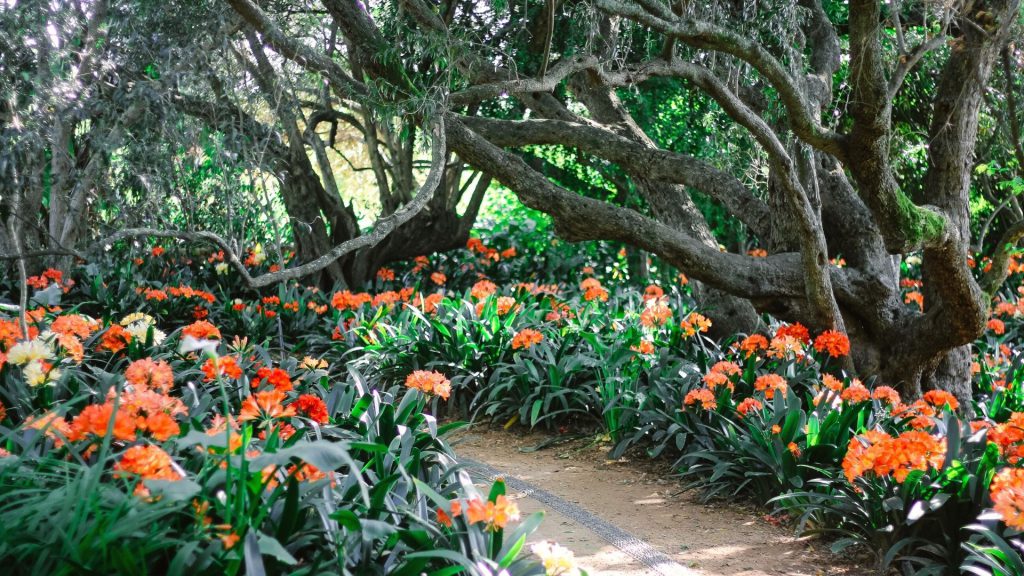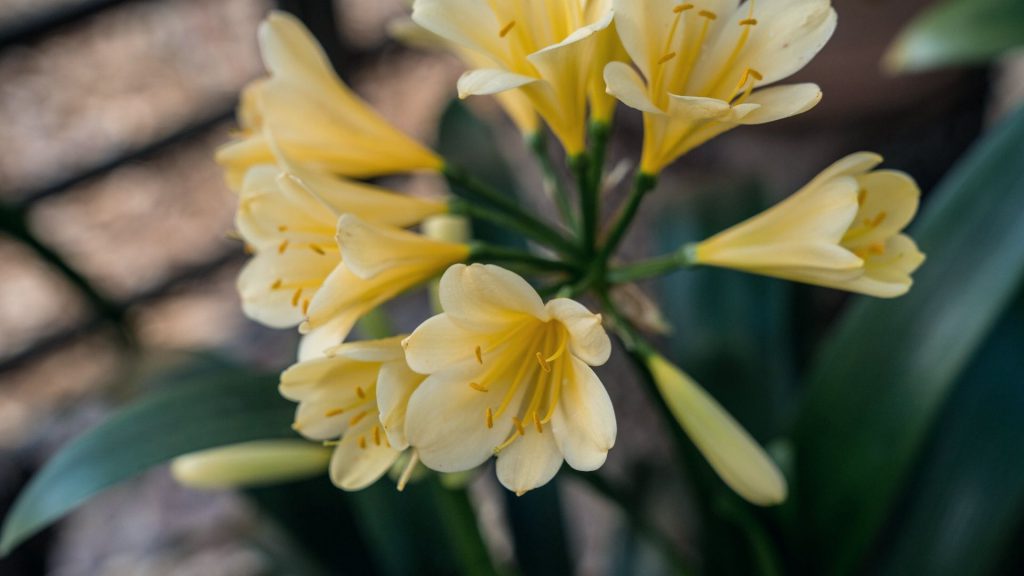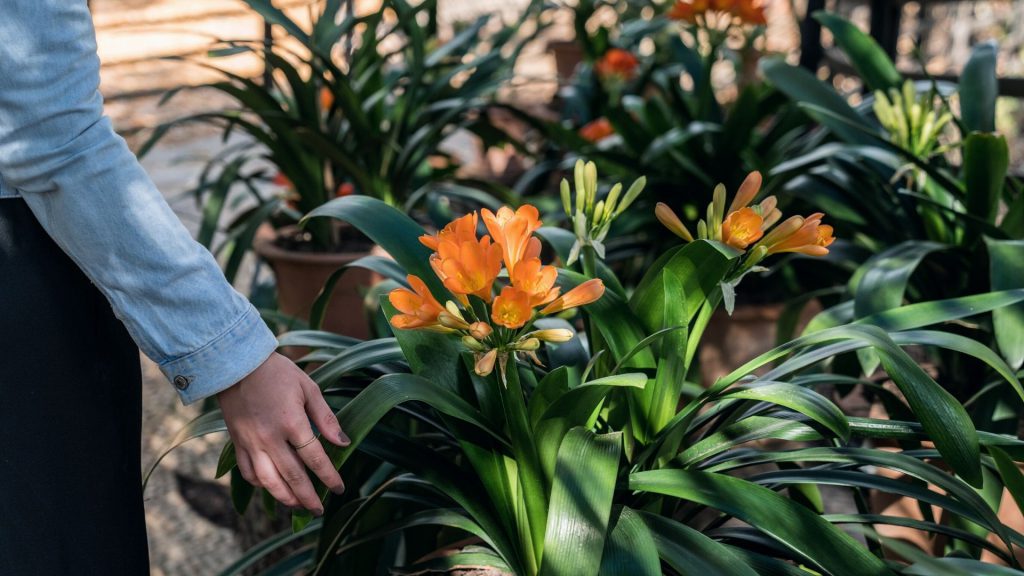
Restaurants
Spa
Day Visits
Shop
Functions
16°C
August 30th, 2021
The arrival of spring heralds the beginning of clivia season on the farm when thousands of clivias clothe the banks of the stream in vibrant hues of red, yellow, peach, orange and bronze.

Along the stream at the bottom of the garden, a winding path meanders, shaded by old oaks and wild olives. Take the path to discover a magnificent array of more than 9000 Clivia miniata plants, with flowers in all shapes and colours, ranging through shades of yellow, peach and orange to deep red. A highlight in our garden, we celebrate these beautiful indigenous lilies during their peak flowering time in September and October.
Also known as the Natal lily or bush lily, the plant is named after the Duchess of Northumberland, Lady Charlotte Florentina Clive, the granddaughter of Robert Clive, who was the first to cultivate and flower these plants in England. Miniata means ‘the colour of red lead’, referring to the flowers in various hues of sunset. The lily is endemic to southern Africa and grows wild in the forests of KwaZulu-Natal, the Eastern Cape, Mpumalanga and Swaziland.

Clivia miniata, in particular, is easily cultivated. See how rewarding it is to self-pollinate clivias at home:
The world’s love affair with South Africa’s clivias began in the 19th century when specimens were sent from KwaZulu-Natal to England. Since then, many enthusiasts have experimented with the breeding of clivias, especially in Japan where advanced clivia breeding is done.
It’s possible to grow your own clivias from ripe seeds – they will turn yellow, orange or red, depending on the variety, when they are ready to be harvested. See how:
Babylonstoren’s particular interest in clivias started some years ago, when enthusiast Dr Hans Roos parted with some of the clivias in his collection as a generous gift to his sister Karen Roos. The plants came from his garden in Sandton, where he has been breeding and selecting clivias as a hobby since 1995.
These clivias flourished under the shade of our wild olives and oaks, which inspired Dr Roos to send more plants to create the spectacular walk along the stream, surrounded by thousands of clivias.

To complement the clivias planted under the trees, we acquired the Mick Dower clivia collection, which is much admired by clivia enthusiasts and is regarded as one of the top clivia collections in the world. This more recent addition to Babylonstoren’s clivias includes all six clivia species, including Clivia nobilis, Clivia miniata, Clivia caulescens, Clivia gardenii and the more recently discovered Clivia mirabilis and Clivia robusta, as well as many unusual hybrids, and were selected and bred by Mick Dower over many years. The collection of clivias in pots are showcased in an undulating shade house known as the Puff Adder, a 70 m tunnel curving through and around huge eucalyptus trees.
Mick Dower also made crossings with the more recently discovered species Clivia mirabilis. These seedlings usually have strong hybrid vigour and they show the deep red stem colour of their rare parent. To maintain this valuable collection, we were fortunate to have the help of Mick’s friend and clivia expert, John Winter, who served as curator of Kirstenbosch from 1978 to 1998.

Repotting and dividing clivias are part of maintaining our collection. See how you can repot and divide plants from your own collection:
To learn more about our clivias, join us for a Garden Tour, daily at 10h00. Booking is essential.